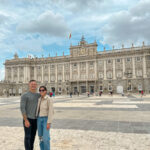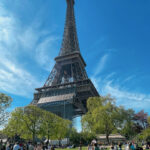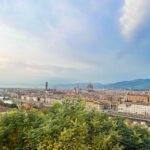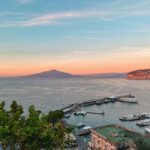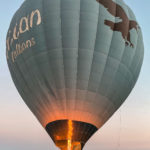
The Complete Travel Guide to Istanbul will provide a brief historical overview of the city, highlight popular attractions to visit, and share tips for planning your trip.
Turkey wasn’t always a top contender of countries I planned to visit. My knowledge of the country was slim; I’d seen beautiful pictures on Instagram of Cappadocia, but beyond that I was clueless. But with some research, I decided to give it a shot and booked a flight.
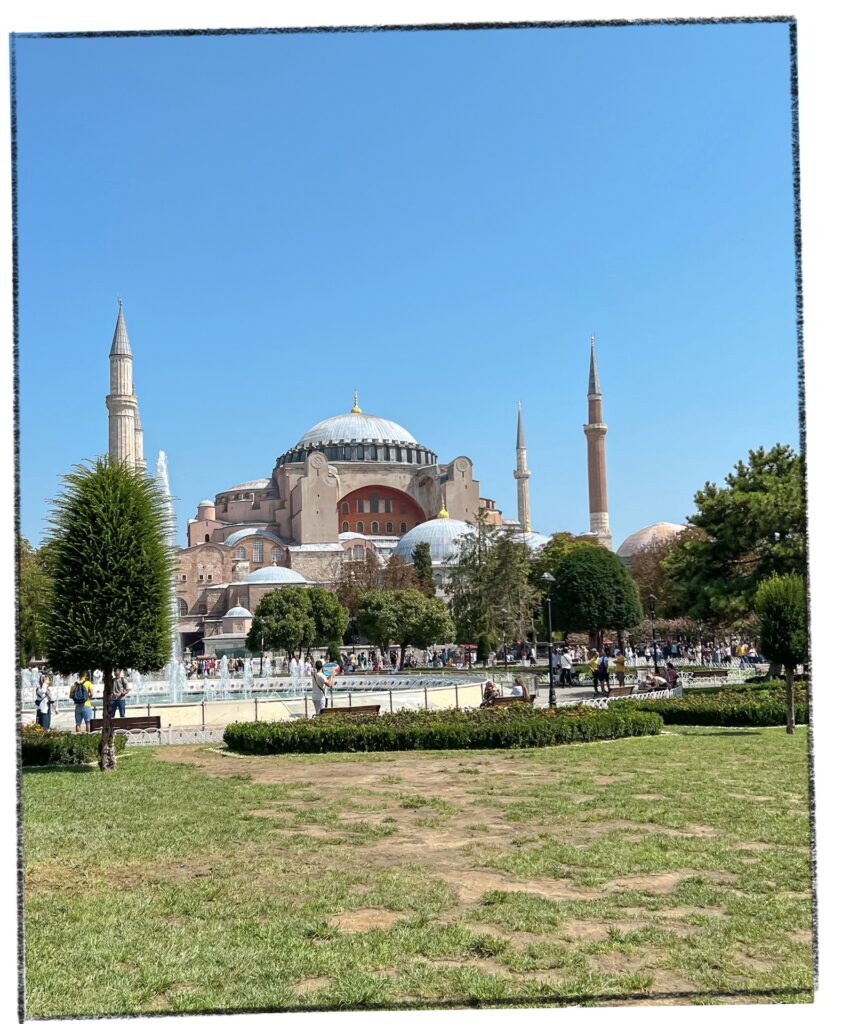
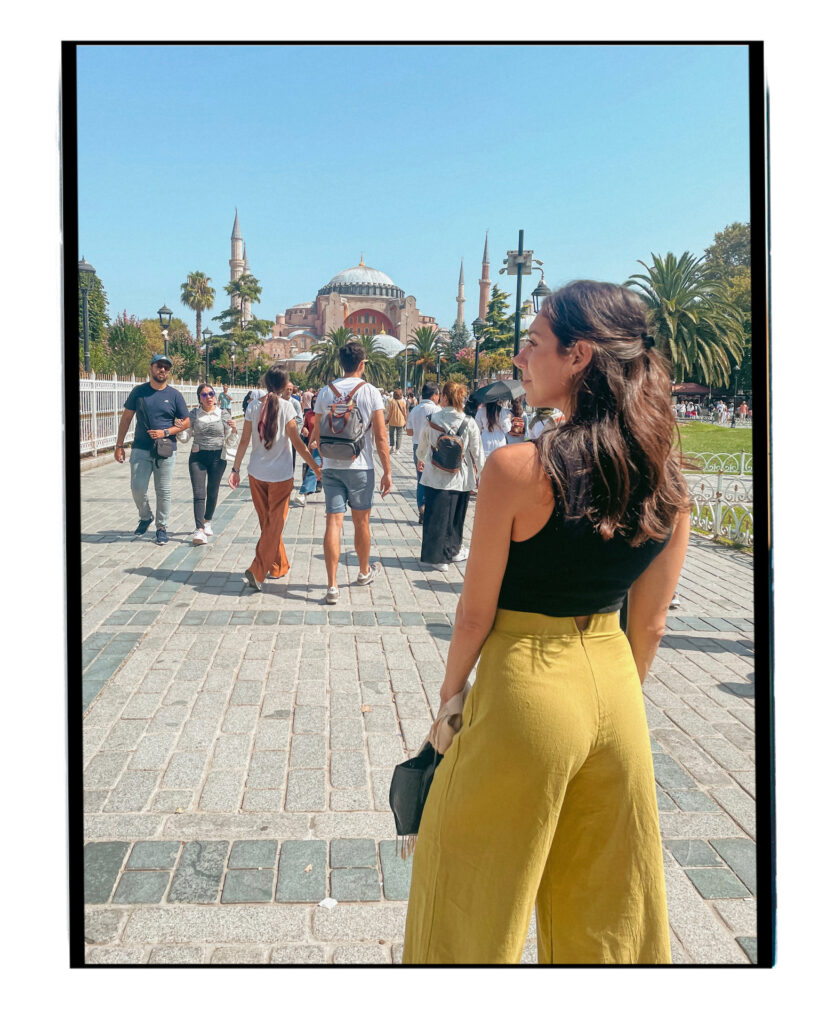
About Istanbul:
Istanbul is an immensely historic city attracting millions of tourists annually. Visitors are drawn to the city’s alluring and unique architectural landscape. The famous mosques and mesmerizing views along the Bosphorus Straight create an undeniably astonishing place.
The former seat of several empires, Istanbul is now one of the world’s most populous cities with over 15 million people. To put it into perspective, that’s almost double the amount of people in New York City. The city is safe, easy to venture around, and family-friendly.
Byzantium – Constantinople – Istanbul
To fully appreciate the foundation and culture of Turkey, one must understand its history. Due to the city’s strategic location along the Bosphorus Straight between Asia and Europe, Istanbul has been the epicenter of conflicts for centuries. My timeline below outlines the different empires who once ruled the land.
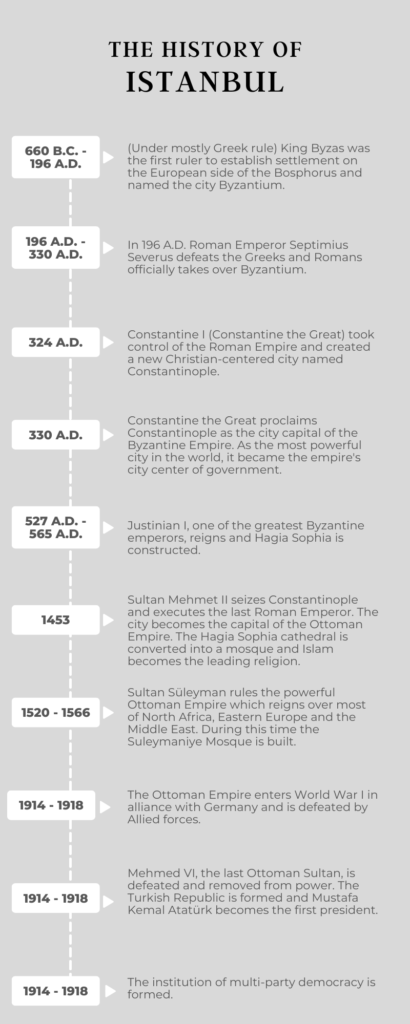
Currency: Turkish Lira (₺)
*In recent years the lira has depreciated in value; as of this writing $1 USD is equivalent to ~₺18 TRY.
Best Time To Visit:
Istanbul is definitely a city you can explore year-round! In my opinion, the best time to visit is from March to May and between September and November. During this time you’ll have enjoyable weather, smaller crowds, and affordable accommodations. December through February can be a bit chilly, rainy, and bring occasional snowy conditions.
Traveling To Istanbul:
Since opening in October 2018, Istanbul Airport (IST) has taken over as the primary international airport, replacing the smaller Istanbul Ataturk Airport. IST is located in the Arnavurköy district on the European side of the city, and it takes 35-40 minutes via highway to reach downtown where you’ll likely want to stay.
Helpful Tip: The airport is quite large and you’ll most likely be taxiing for some time prior to arrival at the appropriate gate.
Getting Around:
Istanbul offers a variety of public transportation options. You’ll enjoy multiple routes and the opportunity to travel via subways, ferries, trains or trams, but you’ll also want a map!
An easy and fairly inexpensive way for visitors to get around is by Uber or taxi. Many Uber drivers will ask for your final destination before confirming a ride. If you opt for a taxi, stay wary of drivers overcharging. Stand your ground on pricing and carry cash as most taxis do not accept credit card.
Helpful Tip: Don’t be alarmed by frequent cancellations during rush hour; you will find a driver!
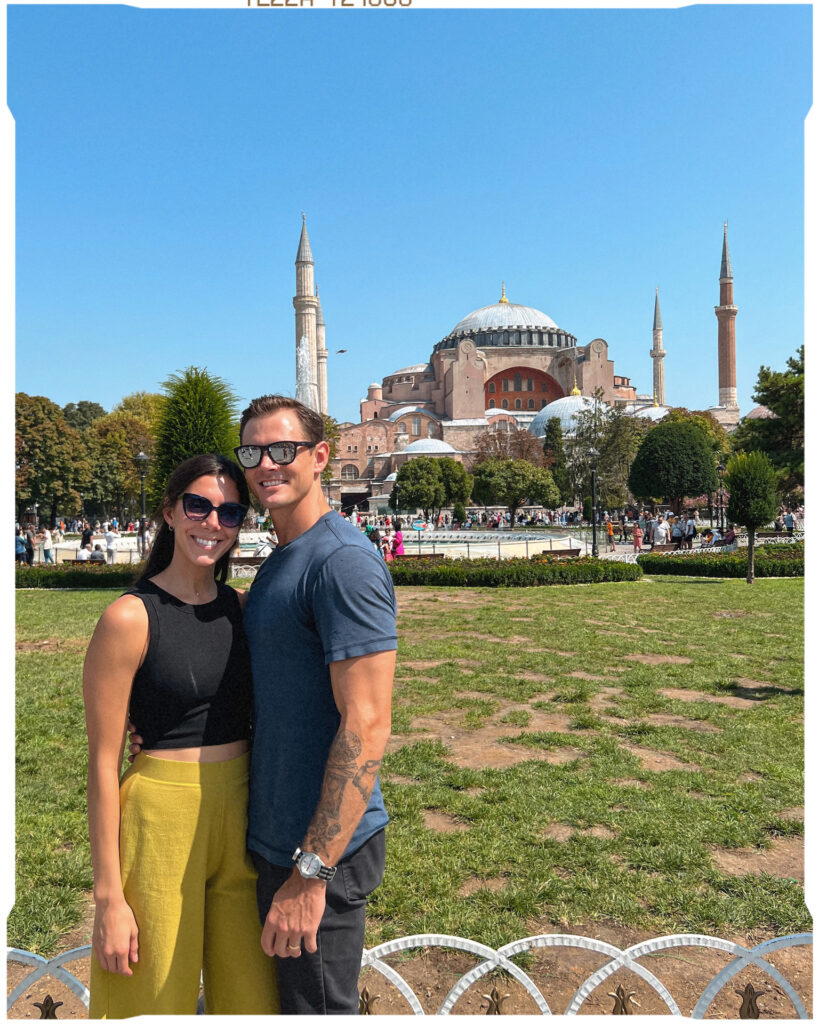
Where To Stay:
Istanbul is made up of multiple unique neighborhoods and districts, each with its own history and vibe. For first-timers I would recommend staying somewhere in the European district of Beyoğlu. Within Beyoğlu are the popular areas of Taksim Square, Galata, and Karaköy.
Opposite the Bosphorus on the European side is the popular neighborhood of Sultanahmet. It’s a hot spot for tourism as it holds the Hagia Sofia, Blue Mosque, Topkapı Palace, and Basilica Cistern. You’ll also be within walking distance of the Grand Bazaar.
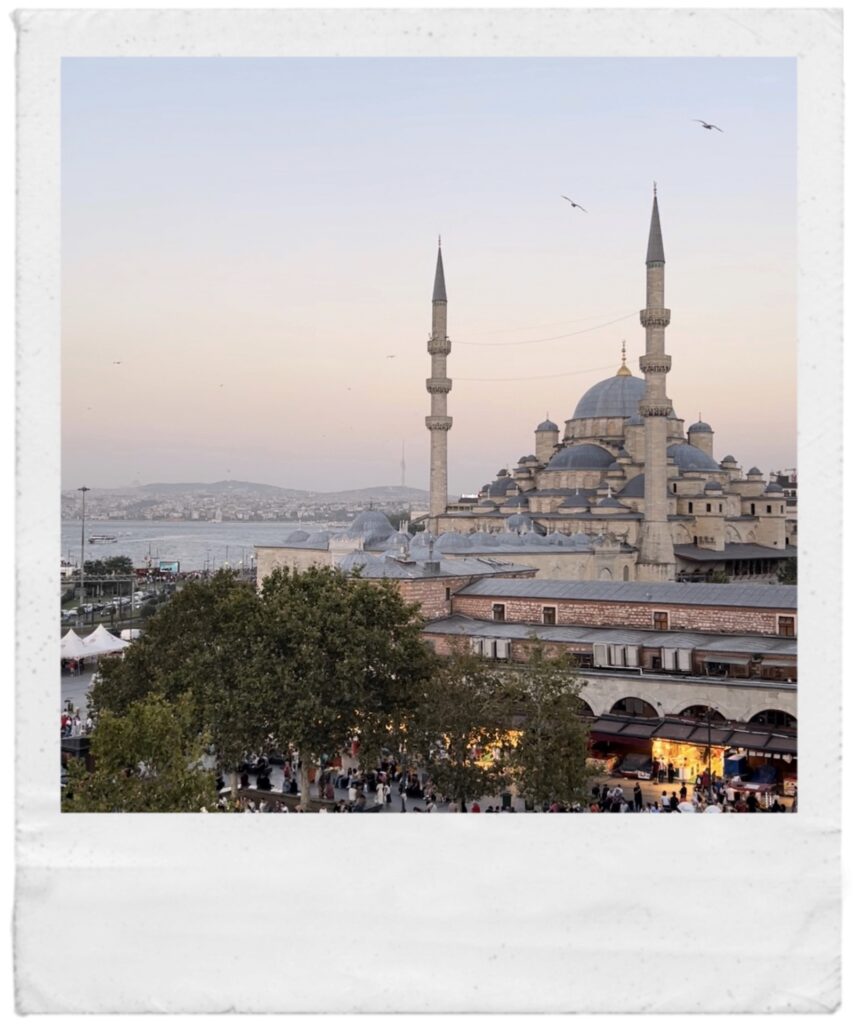
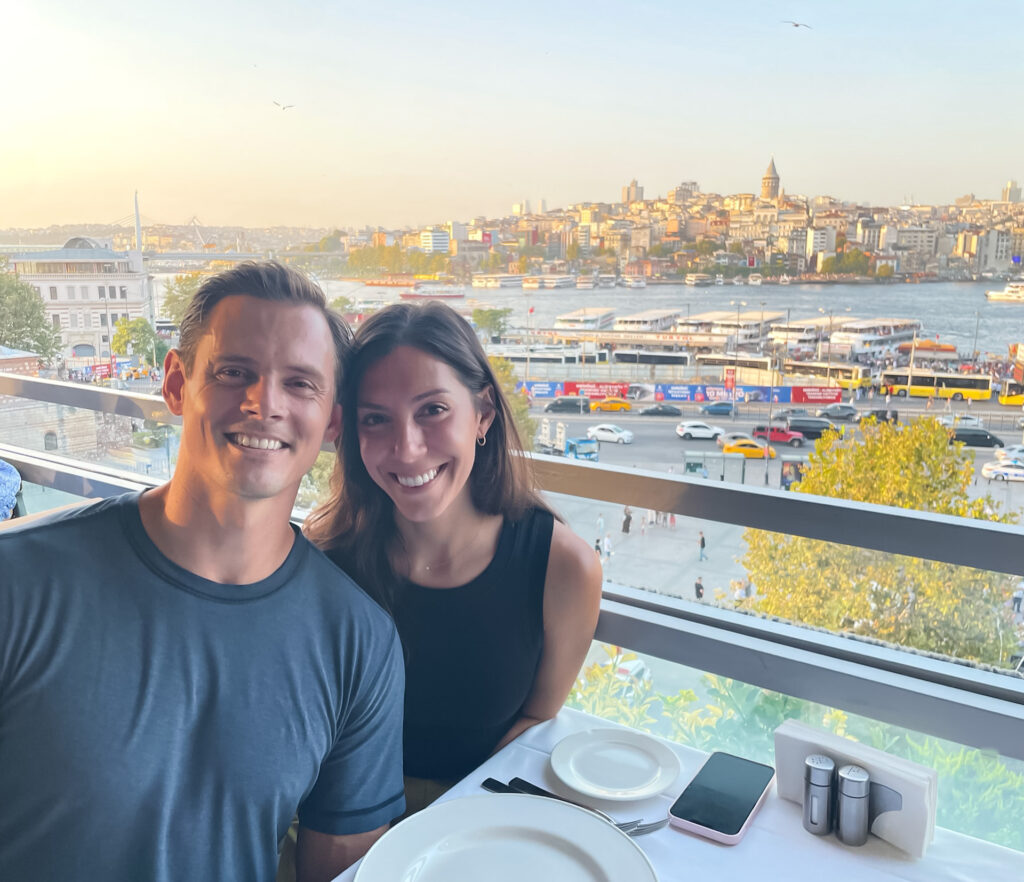
Rooftops:
Hamdi Restaurant Eminönü: I loved this place and it was truly a highlight of the trip. It’s a wonderful spot for first-time visitors as its rooftop dining offers fantastic sunset views overlooking the Bosphorus and traditional Turkish food. Order the famous pistachio kebab!
Los Altos Mexican Restaurant: Grab some tasty margaritas and chips with salsa while taking in the breath-taking views of downtown Istanbul.
What To Do:
There are tons of things to see and do in Istanbul. I highly recommend wearing comfortable shoes because you’ll most likely be on your feet for hours. I’ve compiled a list of the top attractions below:
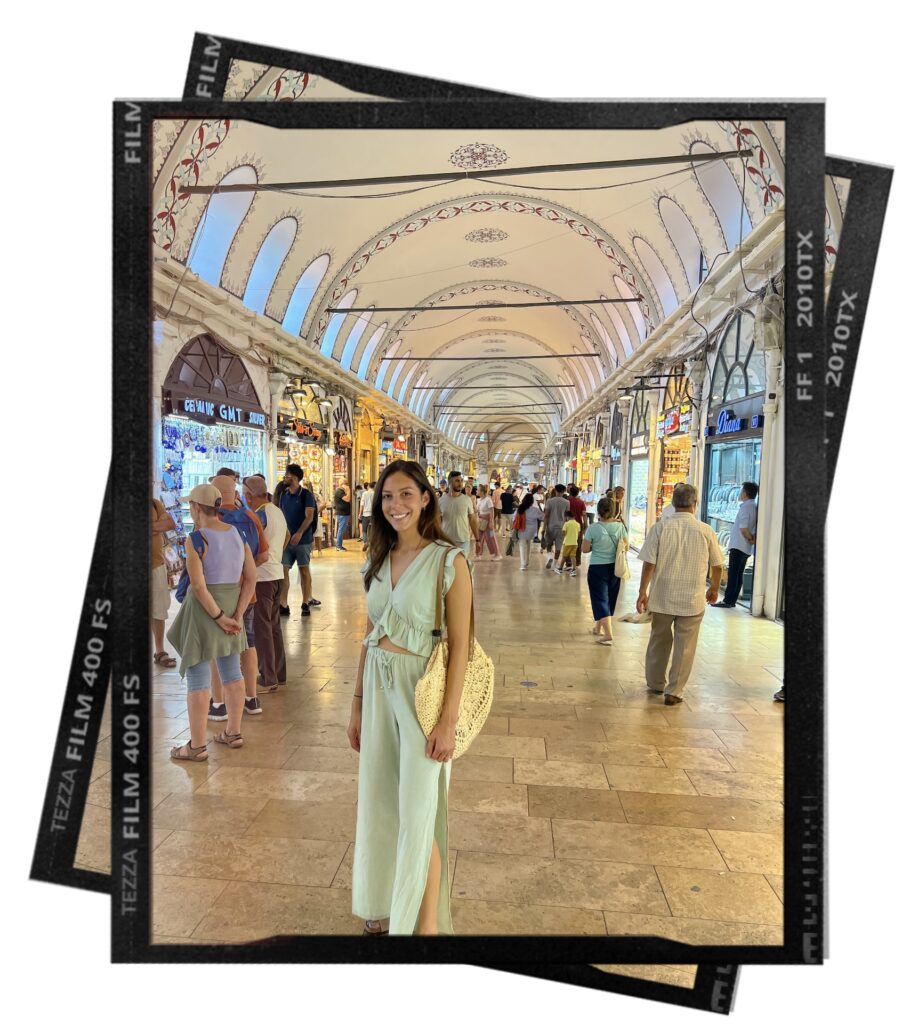
Explore Beyoğlu and Karaköy: The lively harbor-side neighborhood of Karaköy is located on the northern European shore of the Golden Horn. This vibrant area is a blend of the old historic city with pockets of modernity. Explore the streets filled with traditional Turkish bakeries, antique shops, contemporary galleries, chic cafes and bars. While walking through this neighborhood, make sure to try baklava at Karaköy Güllüoğlu, one of the most popular dessert shops. (Creep the ‘gram & you’ll be sold immediately).
Galata Bridge: Two-level bridge connecting the neighborhood of Karaköy with Eminönü. The upper level contains a walkway lined with fisherman out for their daily catch. The bottom level consists of Turkish restaurants working to lure you to eat at their spot.
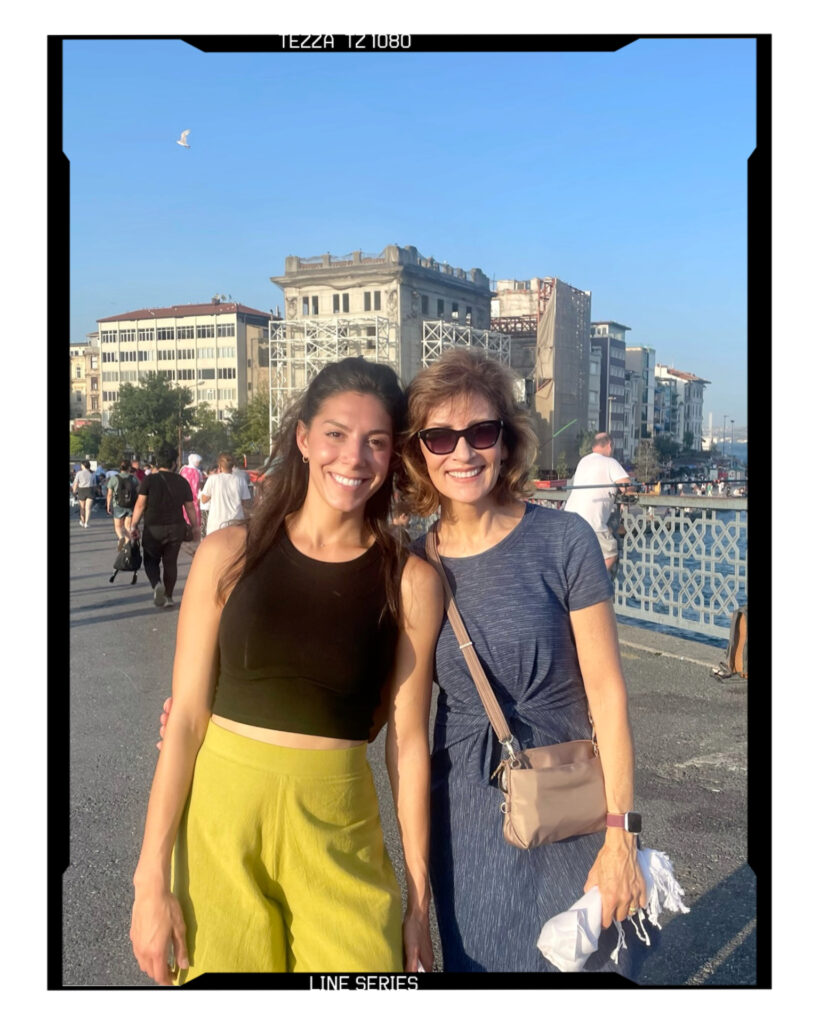
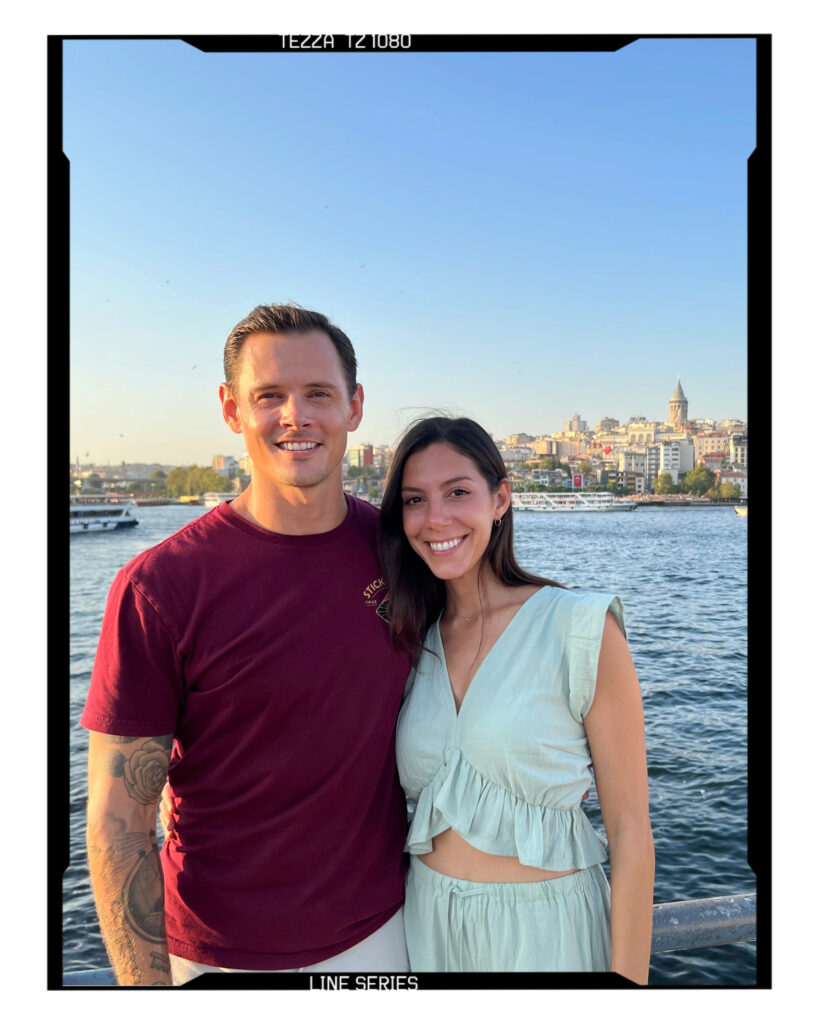
Taksim Square: This square is the heart of the modern city of Istanbul. Within the area is the newly completed Taksim Square Mosque which opened in 2021, Gezi Park, and the Republic Monument which honors the foundation of the Turkish Republic founded in 1923. Directly off the square runs the pedestrian filled, Istiklal Street, where vintage trams run. Along this bustling street you’ll find plenty of department stores, souvenir shops, local restaurants, and TONS of people.
Galata Tower: Built around 500 A.D. as a watch tower to help defend the city. Purchase tickets prior to climbing the iconic tower and expect large crowds during sunset. Viewers swoon over the 360 degree view of Istanbul. Climbing up and down narrow staircases can be a bit claustrophobic for some; prepare for lots of maneuvering around other visitors.
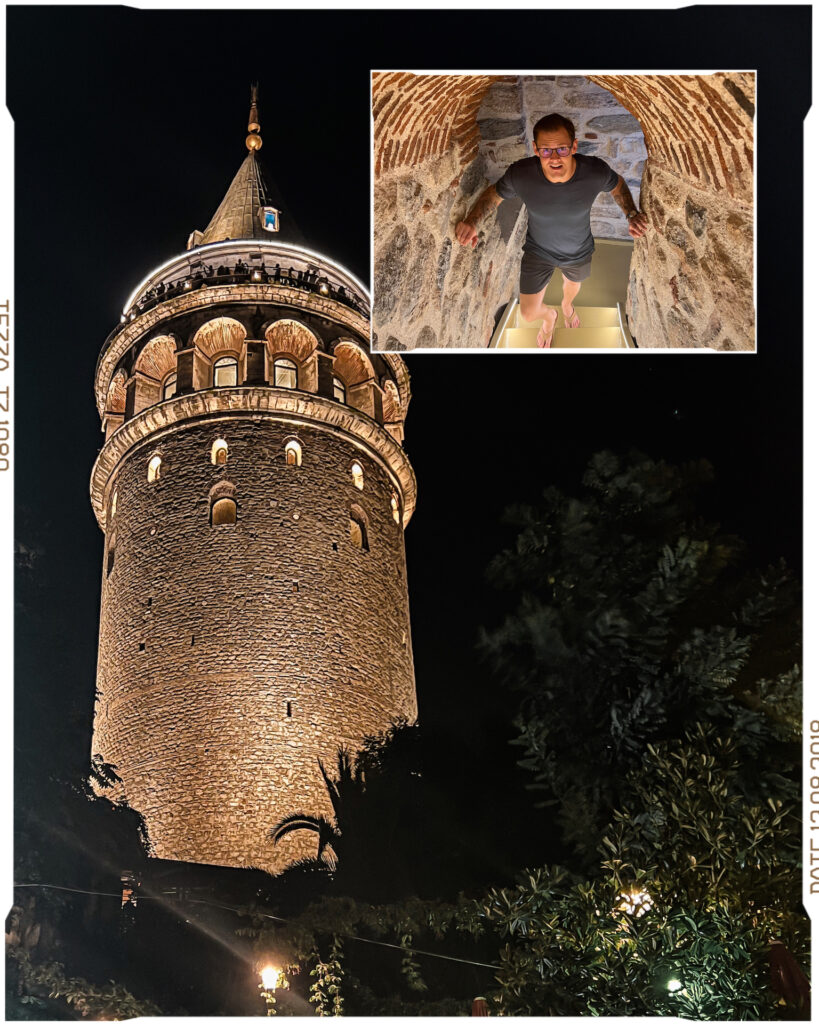
Bosphorus Cruise: The perfect way to end your day. You will find a great deal of companies promoting their boat tours to take you around the city. You can choose between one hour rides, dinner rides, or even a night of partying. It’s a versatile option that allows you to sail through two continents while appreciating the waterfront properties and palaces.
Explore Sultanahmet (Old City): The Sultanahmet neighborhood was the capital of civilization for several empires. Tourists flock to the Old City filled with the most popular main attractions like mosques, museums, and palaces. You can explore on your own, hire a guide in advance, or (if you wait until the last minute for things) hire a guide on the spot outside most attractions. You’ll spend hours on your feet so wear sneakers and bring water!
Hagia Sophia: Built by the Byzantine Emperor Justinian I in 537 as a church for its capital city. In 1453, Sultan Mehmet II of the Ottoman Empire seized Constantinople and converted the church into a mosque. Once the Ottoman Empire collapsed, the Turkish government converted the mosque into a museum and began restoration. It is now once again a mosque, open free of entrance fees to visitors outside prayer hours.
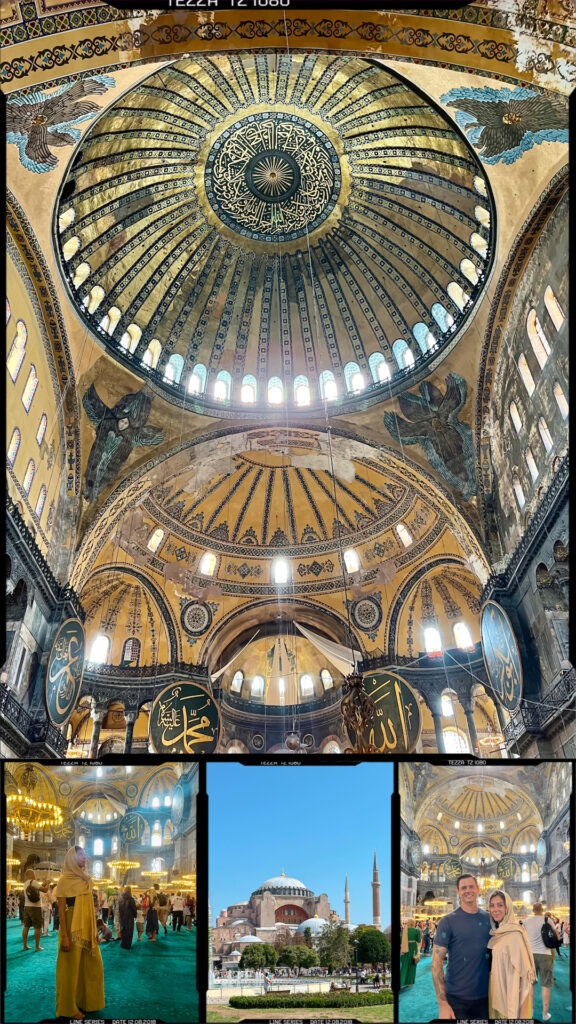
Blue Mosque: [Known in Turkish as the Sultanahmet Camii, or the Sultanahmet Mosque] The mosque was constructed by the Ottoman Empire in the 17th century and has now become a favorite attraction. Unfortunately as of 2022, 95% of the mosque is under construction, but don’t worry! All visitors can still appreciate its interior and the intricately decorated ceiling.
Basilica Cistern: Built by Justinian I in 532, this is the largest ancient cistern of the many hundred that lie beneath Istanbul. This underground chamber is capable of holding 80,000 cubic meters of water and the ceiling is supported by 336 marble columns. It has recently undergone renovation and now is one of the most popular sites in Istanbul.
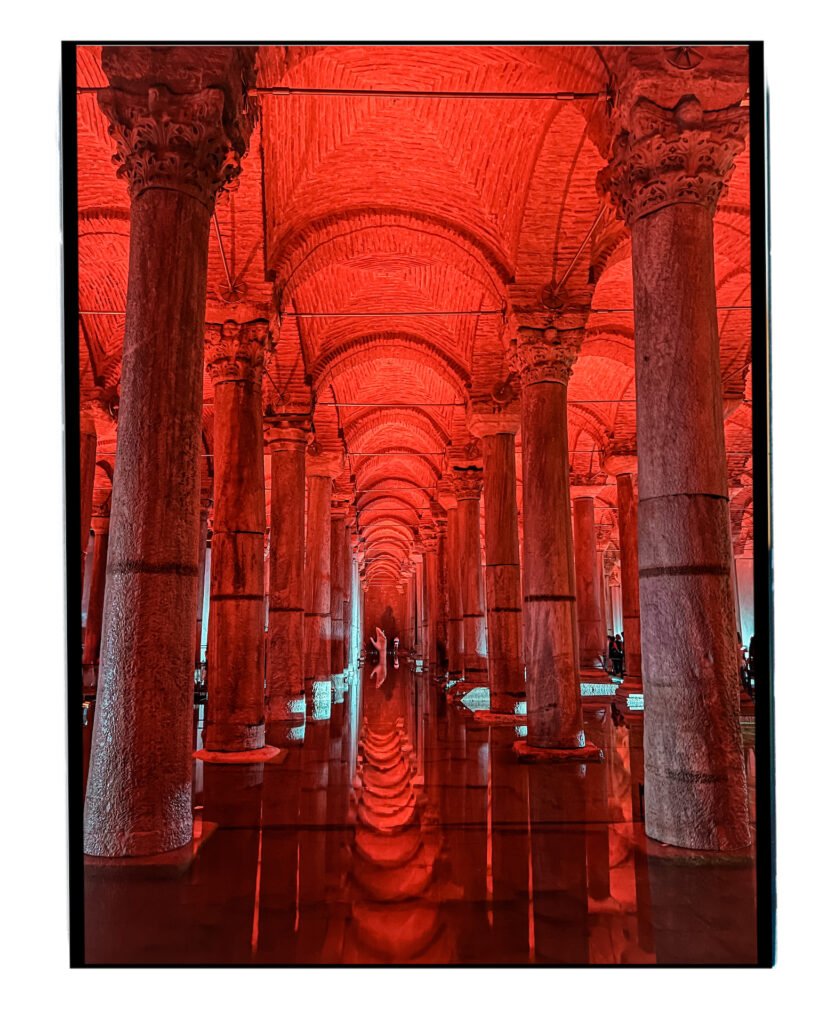
Topkapi Palace: Built as the first Ottoman Palace which served as the primary residence and administrative headquarters from 1458-1873. The property is quite large; tours are a bit long, because it has four large courtyards and many buildings. *Expect to be there for at least 2 hours.
Grand Bazaar: One of the largest markets in the world spanning over 61 streets and 4000 shops. Throughout the streets you’ll find spices, Turkish delights, coffee, tea, rugs, ceramics, lamps, jewelry, towels and more! Do yourself a favor and haggle with the shopkeepers – they’re always trying to scam tourists, but the negotiation is fun if you go into it with the right attitude.
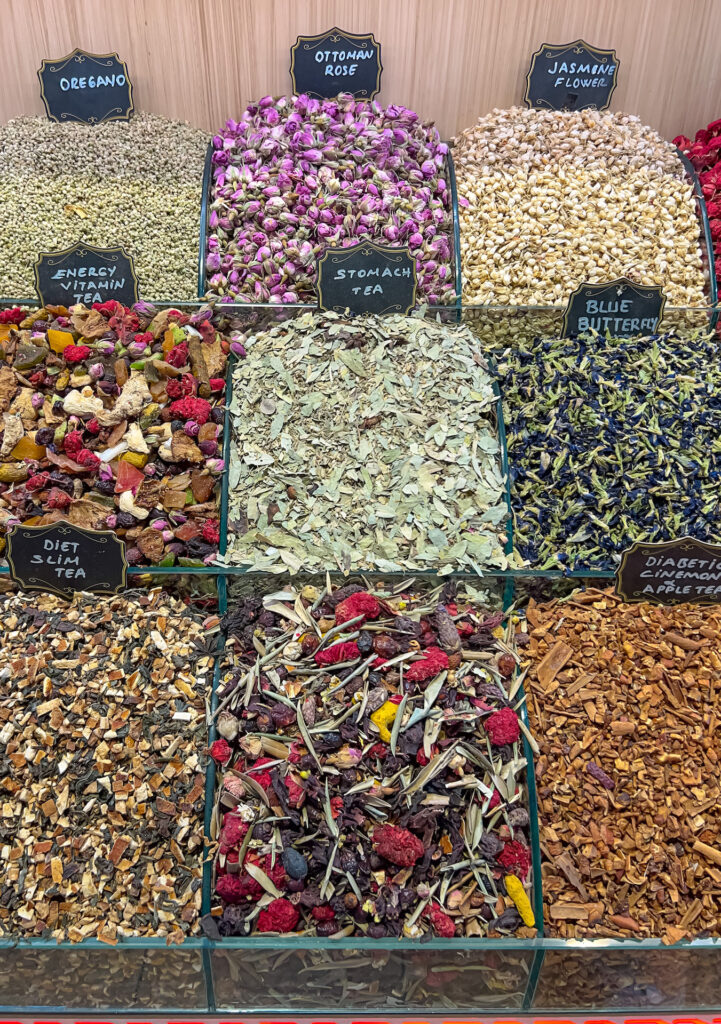
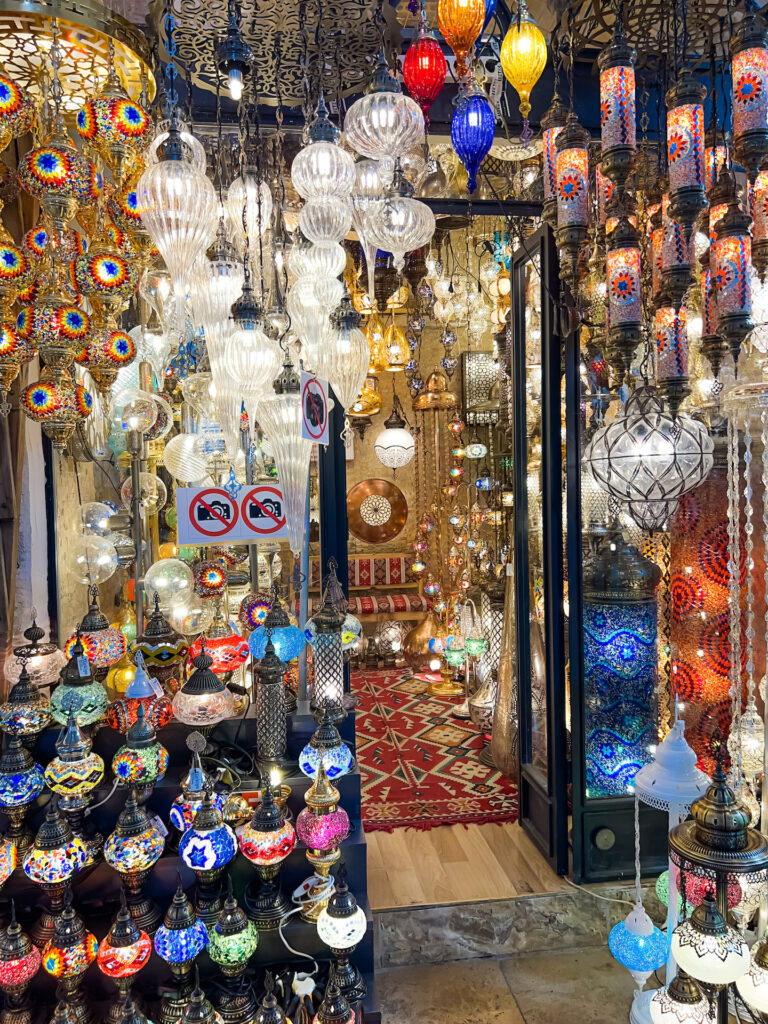
Gülhane Park: Take a breather from touring mosques and museums and stop by this expansive park filled with beautiful gardens and outdoor cafes. The tulip is one of Istanbul’s traditional symbols and every spring, millions of tulips are planted and later celebrated during a festival from April 1st to 30th.
Experience a Turkish Hamam: A trip to Turkey would NOT be complete without experiencing a Turkish hamam. I would recommend starting your day with some serious pampering. My husband and I chose ÇUKURCUMA HAMAMI 1831 based on their decision to allow men and women in the baths together unlike other locations. Three other extremely popular spots include: Cagaloglu Hamam, Hurrem Sultan Hamami, and Kilic Ali Pasa Hamami.
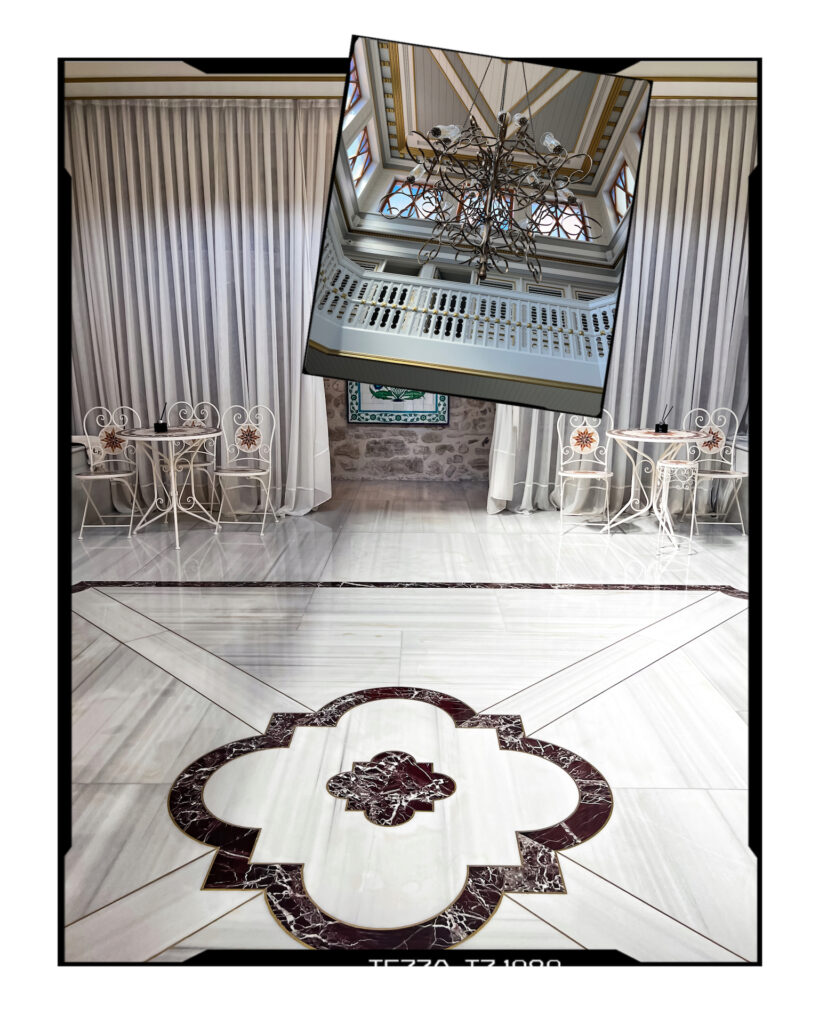
Ferry to Asia: To get from the European to Asian side, you can take the 3 TRY ferry from Kabataş, Beşiktaş or Eminönü to Üsküdar. The ride only takes about 15 minutes. From the ferry station, walk along the coast down south toward the Maiden’s Tower and try different street food along the way. Food is much cheaper on this side! Two popular sites to visit here are Beylerbeyi Palace and Maiden’s Tower.
Beylerbeyi Palace: A 19th-century palace and garden built as the Ottoman sultan Abdulhamid II’s home. Initially, the palace was a summer mansion and place to host foreign dignitaries on their visits to Istanbul city.
Maiden’s Tower: The tower dates back to 5th century B.C., when it was built by the Athenian general Alcibiades for surveillance of the crucial waterway.
The name is derived from the legend of a Byzantine emperor’s prophecy that his daughter would die at the age of 18 by a snake. He built the tower on the Bosphorus, isolated from land, so no snake could kill her. In the end, however, she couldn’t escape her destiny and was killed by a snake hiding in a fruit basket delivered from the city.
Despite several renovations that occurred in earlier centuries, Byzantine Emperor Alexius Comnenos is credited with organizing the greatest improvements to the tower’s defensive positions (by then, called Arcla, meaning, “Small Tower”) in the 12th century A.D. When the Ottomans seized power, the tower continued to be used as a lighthouse and observation point. In 2021, the Turkish Ministry of Culture and Tourism launched a new restoration project of this historic site. Although currently closed, its planned reopening is in 2023.
Interested in visiting Cappadocia? Check out my guide HERE!



